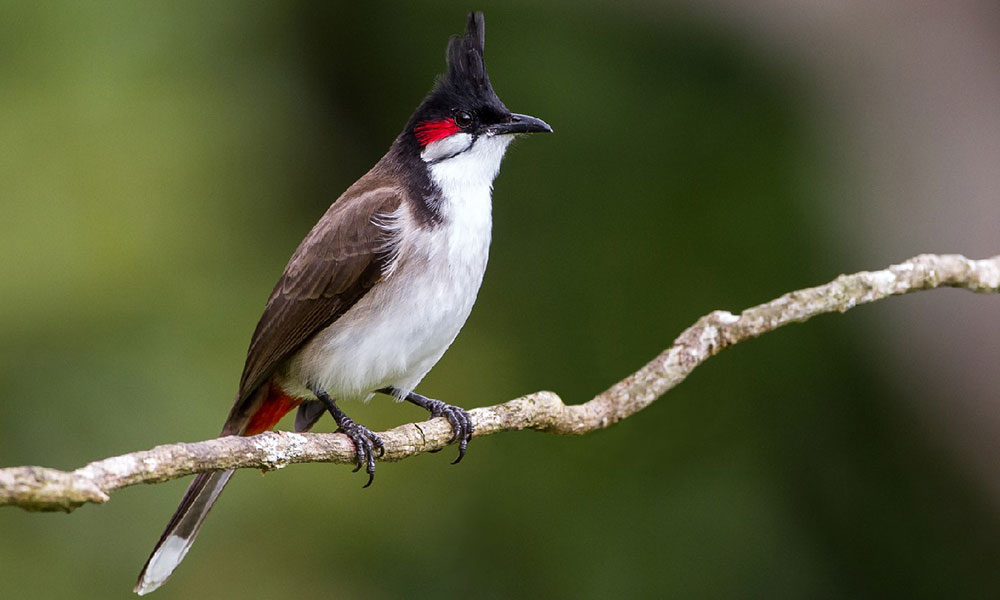
The Red-whiskered Bulbul measure about 20 cm (7 in.) in length, including the tail.
The plumage above is mostly brown. Below they are whitish with buff-colored flanks and a broken dark chest band (that may be nearly complete in some subspecies).
They have a tall pointed black crest, red face patch, and thin black moustachial line. The tail is long and brown with white tips (some subspecies lack the white tips). The vent area is red.
All white birds (albinos) have also occurred.
This species is more often heard than seen, especially in the mornings when they call from the tops of trees.
The Red-whiskered Bulbuls are native to tropical Asia, where they inhabit lightly wooded areas, a more open country with bushes and shrubs, and farmland.
Introduced feral populations have established themselves in the USA (Los Angeles, Florida, Hawaii); in the Mauritius, Assumption Island and Mascarene Islands; and Australia, where the Red-whiskered Bulbul was introduced by the Zoological and Acclimatization Society in 1880 to Sydney and became well established across the suburbs by 1920. They have continued to spread to around 100 km away.
Their main diet consists of various fruits (including those of Thevetia peruviana that are toxic to mammals), as well as nectar and insects.
Numerous plants have benefitted from these birds by having their seeds dispersed, thus producing plants in areas that are far away from the mother plants. For example on the island of Réunion, where the Red-whiskered Bulbuls were introduced, they aided the spread of alien plant species, such as Rubus alceifolius
The breeding season is spread out and peaks from December to May in southern India and March to October in northern India. Breeding may occur once or twice a year. The courtship display of the male involves head bowing, spreading the tail and drooping wings. The nest is cup-shaped and is built on bushes, thatched walls or small trees. It is woven of fine twigs, roots, and grasses, and embellished with large objects such as bark strips, paper, or plastic bags. Clutches typically contain two to three eggs




No Comments